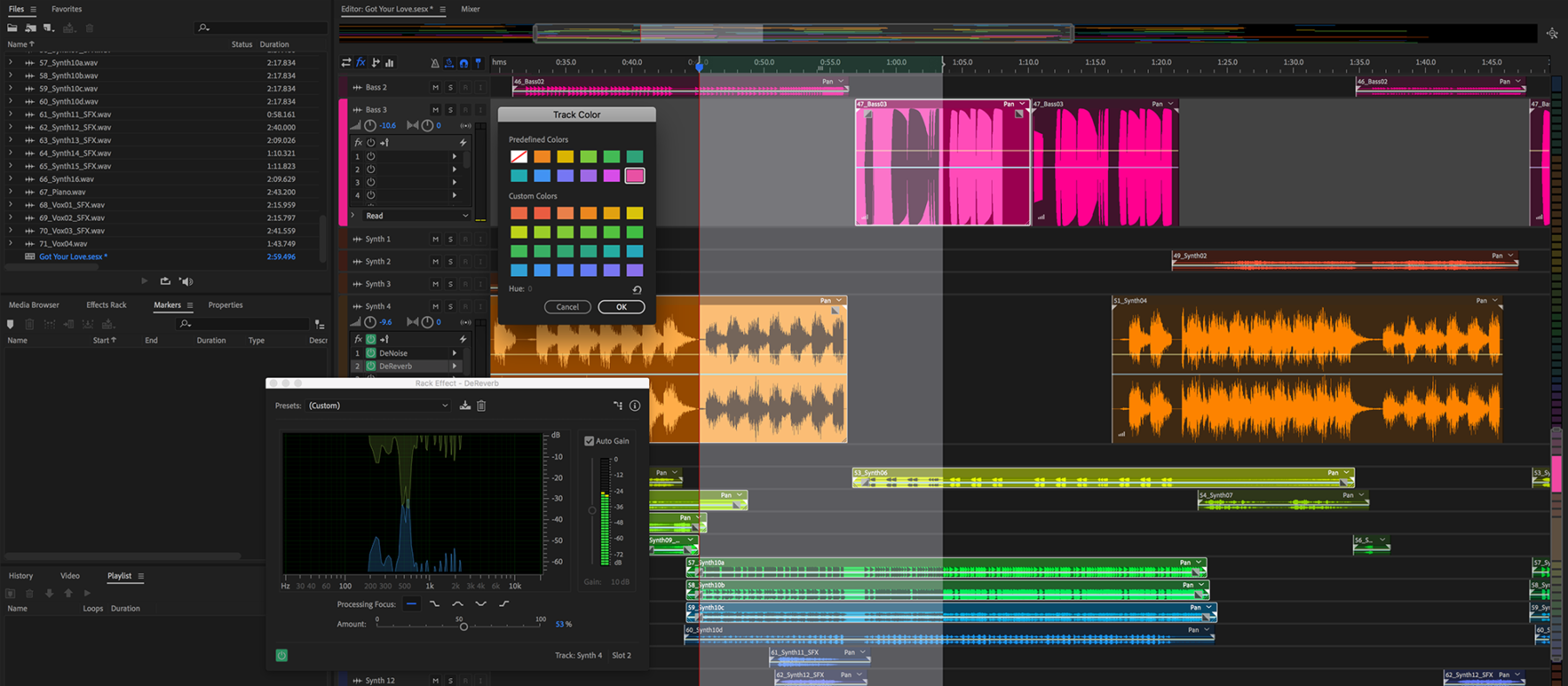
Templates are stored in the User folder which, while not invisible, is not readily apparent. While there are several ways to open this folder, the easiest is to open your Macintosh HD hard drive, then double-click Users. This allows you to use a template to create a new, unique session at any time. Notice, also, that the Session Name defaults to some version of “Untitled Session #”. You’ll find your new template in the Template popup menu. To verify the template was created successfully, choose File > New > Multitrack Session. The default location meets those criteria. In general, you want your templates to be accessible, but not easy to erase accidentally. NOTE: Notice that I didn’t change the storage location? That was intentional. If you want all your adjustments – including markers – to be saved with the template (and I strongly recommend you do so), make sure the Include markers… checkbox is checked. In the resulting dialog, give the template a name that makes sense, because from here on out, you’ll only see it in a menu. Once you are sure your template is polished and ready for saving, choose File > Export > Session as Template. Since the goal of any template is to reduce repetitive work, creating a template that you need to spend time “fixing” each time you use it is not helpful. The next step is to triple-check that all files, markers, volume settings and effects are EXACTLY as you want them saved. To remove a file from the Files panel, highlight it, then press the Delete key. The mistake I often make is failing to remove unneeded files, which means that the template is far larger than it needs to be and contains files that I don’t want or need.

The biggest challenge is to make sure you have only the files you want in the template listed in the Files panel. BUT it helps to think about what how you want to use the template before creating it. Everything else you need to avoid creating the same settings more than once.Ĭreating a template is easy, essentially you are creating a session file.Audition ships with about a dozen pre-built templates.įor example, here’s the template I use to create stand-alone interviews from our weekly podcast, “Digital Production Buzz.” After each show, I extract each interview from the show and post it to the Buzz website, so audience members that are in a hurry can just listen to a single interview, as well as the entire show. NOTE: Your template list won’t match mine, as I customized my templates years ago. Templates are accessed from the Templates popup menu in the New Multitrack Session window. As such, you choose them whenever you create a new Multitrack session using File > New > Multitrack Session (shortcut: Cmd + N).

Templates are used for new multitrack projects. What I most like about templates is that I can save them with clips, markers, effects, track labels – everything, in fact, that’s stored in a normal session file – included in the template.

A template is simply a session (project) that is easy to access, easy to rename, but not easy to accidentally erase. Templates are a feature in Adobe Audition that I use every week.


 0 kommentar(er)
0 kommentar(er)
